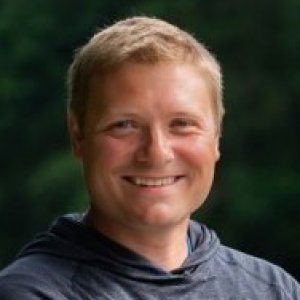Kory Konsoer
Associate Professor and Associate Director for the LSU Center for River Studies Louisiana State University
- Baton Rouge LA
Dr. Konsoer is interested in process fluvial geomorphology, particularly the coevolution of river flows and channel morphology.
Areas of Expertise
Biography
Research Focus
Fluvial Geomorphology & River Morphodynamics
Dr. Konsoer’s research focuses on fluvial geomorphology and river morphodynamics—how flow, sediment, and vegetation co-evolve to shape meandering channels along the Mississippi River and beyond. He combines hydroacoustic and drone surveys, remote sensing, and numerical modeling to track channel change and inform river-coastal restoration.
Answers
- How are human activities like levee building and damming changing the way the Mississippi River carries water and sediment, and what does that mean for Louisiana’s coast?

To protect cities and communities along the Mississippi River, large levees were built along the lower reaches following the historic 1927 flood. These levees prevent overbank flooding but also cut off freshwater and sediment delivery to adjacent wetlands and floodplains, and instead funnel water and sediment directly into the Gulf of Mexico (Kesel, 1988). Historically, most of the sediment reaching the mouth of the Mississippi River was sourced from the Missouri Watershed and tributaries draining from the Rocky Mountains (Meade & Moody, 2010). However, beginning in the 1950s, extensive dam construction on the Missouri River and its major tributaries have resulted in large volumes of sediment being trapped, reducing the total sediment load reaching Louisiana’s delta plain from ~390 Mt y-1 (pre-dam conditions) to ~100 Mt y-1 (Kemp et al., 2016).The effects of substantially reduced sediment loads and restrictions to the exchange of freshwater and sediment between the river and deltaic wetlands have critically impacted Louisiana’s coast. Without the periodic input of river sediment to balance natural subsidence and sea-level rise, wetlands and barrier islands are rapidly eroding. Since the 1930s, nearly 5,000 km² of land has been lost, contributing to ecosystem degradation and greater vulnerability to hurricanes and storm surge (Couvillion et al., 2017).
Education
University of Illinois, Urbana-Champaign
Ph.D.
Geography
2014
West Virginia University
M.S.
Geology
2008
Grand Valley State University
B.S.
Geology
2006
Accomplishments
LSU Alumni Association Faculty Excellence Award
2025
Early Career Alumni Achievement Award, University of Illinois
2019
LSU Alumni Association Rising Faculty Research Award
2019
Media Appearances
April’s Storms Were Relentless. But the Rainwater Is Finally Going Away.
The New York Times online
2025-05-03
“This is the situation we’re seeing now, where heavy rains fell in Kentucky in early April and it will be roughly four weeks before that peak discharge reaches New Orleans,” said Kory Konsoer, associate director of the Center for River Studies at Louisiana State University.
Experts at LSU weigh in on impact of historically low Mississippi River
1012 Industry Report online
2022-11-01
Willson, and Kory Konsoer, associate professor in the LSU Department of Geography, shared more insight on what the low-level means for the state and nation in a recent Q&A published by LSU.
Articles
Increased hydraulic roughness in alluvial rivers created by sand‐mining sculpted bed features
Journal of Geophysical Research: Earth Surface2025
Alluvial bedforms are a first order control on flow resistance, water levels and rate of sediment transport. Their morphologies are a direct reflection of the hydraulic and sedimentological conditions under which they are formed. Studies of natural dunes in large river systems have shown that low angled dunes are dominant, characterized by reduced flow resistance and limited recirculation of flow in their lee‐slopes. However, increasingly, alluvial rivers are influenced by human activities, such as sand extraction, that directly impact the morphologies of river beds and bedforms. Here, we present a comparison of the morphologies of natural and anthropogenically influenced bedforms observed through multibeam echo sounder surveys on the Mekong River in Cambodia.
Quantitative identification of lithofacies by integrating diverse geophysical data in the Late Holocene False River point bar complex, Louisiana, USA
Interpretation2025
The False River area of the Mississippi River preserves a Holocene example of a meandering river point bar in a continental-scale system. We predict lithofacies quantitatively, using K-means cluster analysis from a nine-well data set that integrates well-log data (electrical conductivity [EC], corrected pressure, and horizontal hydraulic permeability), grain-size analyses, and 14 defined sediment types. Data are collected from an unconsolidated and water-saturated environment down to 90 ft (27.4 m). Because of the low number of grain-size analyses, we develop a novel “hybrid” approach primarily using generalized additive models, which allow us to create a more extensive and accurate data set. Horizontal permeability values calculated from the corrected pressure match those found (800–21,000 mD) in the analogous Cretaceous-age McMurray Formation.
Beyond Water Surface Profiles: A New Iterative Methodology for 2D Model Calibration in Rivers Using Velocity Data from Multiple Cross-Sections
Water2025
Observed longitudinal water-surface profiles are commonly used to calibrate river hydrodynamic models, relying on assumptions of lateral uniformity in water surface elevation and velocity distribution. While suitable for 1D models, this approach has limitations in regard to 2D model calibration. When 2D flow measurements are available, a more robust quantitative evaluation is necessary to assess model accuracy. This study introduces a novel methodology to improve 2D model calibration and evaluate performance. High-resolution bathymetric and hydrodynamic data collected with a multibeam echosounder (MBES) and acoustic Doppler current profiler (ADCP) were aligned to compare observed and simulated flow velocities at matching spatial locations. Statistical metrics, including relative mean absolute error and root-mean-square error, were employed to assess hydrodynamic modeling.
Long-term geomorphic effects of longitudinal training walls in the Grand River, Michigan (USA)
Geomorphology2024
The Grand River is the longest river in Michigan, flowing from northwest Hillsdale County to Lake Michigan, and draining an area over 14,400 km2. Bathymetric surveys of a ~ 38 km reach of the river from Grand Rapids to the confluence with Bass River, performed in 1906, were uncovered in the Grand Rapids Community Archives and Research Center in 2014. These maps show depth recordings across the channel along cross sections spaced ~90 m apart. The maps also show the location of numerous training walls that were built in the river in the 1890's as an effort to maintain navigation. The 1906 maps were georeferenced, and the bathymetric data were digitized, converted to bed elevation, and interpolated into an elevation model of the channel bed.
Spatial and wavelet analysis of precipitation and river discharge during operation of the Three Gorges Dam, China
Ecological Indicators2023
The Three Gorges Dam and Reservoir on the Yangtze River is one of the world's largest dams. After the dam's construction in 1997, the reservoir started filling up, expanding to a size of over 600 km2. Therefore, its possible influence on maintaining the size and water level of this waterbody is significant and concerning. This research utilized wavelet coherence analysis to examine the temporal correlation and phase coherence among various datasets, including dam injection (1998–2018) and discharge (2003–2018) data, ground station precipitation data along the Yangtze River (1998–2020), and river discharge raster maps 1998–2018. The analysis revealed a strong coherence between dam operation and river discharge rates, as well as a minor seasonal coherence between dam operation and precipitation.
Affiliations
- Association of American Geographers
- American Geophysical Union
- European Geophysical Union
- Geological Society of America
- International Association for Hydro-Environmental Engineering and Research
- Society for American Archaeology
Research Grants
Relationships between vegetation and discharge on distributary channels in the Bird Foot Delta: bifurcations and sediment flux
US Department of Agriculture
2023
Analyses of USDA Flood Control Reservoir Sedimentation,
US Department of Agriculture
2023
Collaborative Research: Unraveling the controls on origin and formation of oxbow lakes
NSF Geomorphology and Land Use Dynamics
2023






